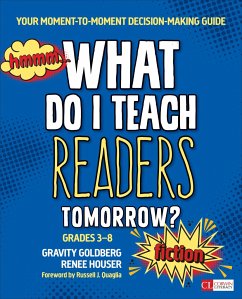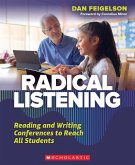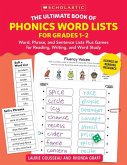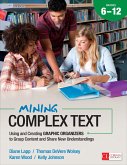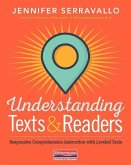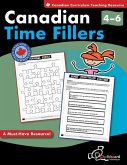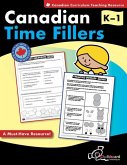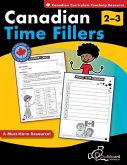Gravity Goldberg, Renee W Houser
What Do I Teach Readers Tomorrow? Fiction, Grades 3-8
Your Moment-To-Moment Decision-Making Guide
Gravity Goldberg, Renee W Houser
What Do I Teach Readers Tomorrow? Fiction, Grades 3-8
Your Moment-To-Moment Decision-Making Guide
- Broschiertes Buch
- Merkliste
- Auf die Merkliste
- Bewerten Bewerten
- Teilen
- Produkt teilen
- Produkterinnerung
- Produkterinnerung
Two renowned educators show teachers how to mine what readers write and say for clues that guide follow up lessons.
Andere Kunden interessierten sich auch für
![Radical Listening Radical Listening]() Dan FeigelsonRadical Listening28,99 €
Dan FeigelsonRadical Listening28,99 €![The Ultimate Book of Phonics Word Lists: Grades 1-2 The Ultimate Book of Phonics Word Lists: Grades 1-2]() Rhonda GraffThe Ultimate Book of Phonics Word Lists: Grades 1-218,99 €
Rhonda GraffThe Ultimate Book of Phonics Word Lists: Grades 1-218,99 €![Mining Complex Text, Grades 6-12 Mining Complex Text, Grades 6-12]() Diane K LappMining Complex Text, Grades 6-1229,99 €
Diane K LappMining Complex Text, Grades 6-1229,99 €![Understanding Texts & Readers Understanding Texts & Readers]() Jennifer SerravalloUnderstanding Texts & Readers51,99 €
Jennifer SerravalloUnderstanding Texts & Readers51,99 €![Canadian Time Fillers Grades 4-6 Canadian Time Fillers Grades 4-6]() Demetra TurnbullCanadian Time Fillers Grades 4-615,99 €
Demetra TurnbullCanadian Time Fillers Grades 4-615,99 €![Canadian Time Fillers Grades K-1 Canadian Time Fillers Grades K-1]() Demetra TurnbullCanadian Time Fillers Grades K-115,99 €
Demetra TurnbullCanadian Time Fillers Grades K-115,99 €![Canadian Time Fillers Grades 2- 3 Canadian Time Fillers Grades 2- 3]() Demetra TurnbullCanadian Time Fillers Grades 2- 315,99 €
Demetra TurnbullCanadian Time Fillers Grades 2- 315,99 €-
-
-
Two renowned educators show teachers how to mine what readers write and say for clues that guide follow up lessons.
Hinweis: Dieser Artikel kann nur an eine deutsche Lieferadresse ausgeliefert werden.
Hinweis: Dieser Artikel kann nur an eine deutsche Lieferadresse ausgeliefert werden.
Produktdetails
- Produktdetails
- Verlag: Sage Publications
- Seitenzahl: 304
- Erscheinungstermin: 24. März 2017
- Englisch
- Abmessung: 231mm x 185mm x 20mm
- Gewicht: 612g
- ISBN-13: 9781506351230
- ISBN-10: 1506351239
- Artikelnr.: 47304001
- Herstellerkennzeichnung
- Libri GmbH
- Europaallee 1
- 36244 Bad Hersfeld
- gpsr@libri.de
- Verlag: Sage Publications
- Seitenzahl: 304
- Erscheinungstermin: 24. März 2017
- Englisch
- Abmessung: 231mm x 185mm x 20mm
- Gewicht: 612g
- ISBN-13: 9781506351230
- ISBN-10: 1506351239
- Artikelnr.: 47304001
- Herstellerkennzeichnung
- Libri GmbH
- Europaallee 1
- 36244 Bad Hersfeld
- gpsr@libri.de
Gravity Goldberg is an international educational consultant and author of eight books on teaching. Mindsets & Moves (Corwin Literacy, 2015) put her on the world stage with its practical ways to cultivate student agency, leading to speaking engagements and foreign translations of her work. She has almost 20 years of teaching experience, including positions as a science teacher, reading specialist, third grade teacher, special educator, literacy coach, staff developer, assistant professor, educational consultant, and yoga teacher. Gravity holds a B.A. and M.Ed. from Boston College and a doctorate in education from Teachers College, Columbia University. She is the founding director of Gravity Goldberg, LLC, a team that provides side-by-side coaching for teachers.
Foreword
Acknowledgments
A Quick-Start Guide for Easy Access
Chapter 1: Each Classroom Moment Is an Instructional Decision
Acting Without a Script: Embracing Our Role as Improvisers
Answering the "What Next?" Question
Intentional Teaching: Decision Making With Students at the Center
Self-Reflection Questionnaire: What Type of Decision Maker Are You?
Decision-Making Styles
Three Common Teaching Habits
Let Students Be Your Guide
Getting Started: An Action Plan
Chapter 2: Decisions About Book Selection
Making a Choice to Read Aloud a Fiction Text
Thin-Slicing Fiction Texts
Picture Books and Wordless Books
Short Story Collections
Novels
Graphic Novels
Ways to Engage Students in Fiction Read Alouds
Chapter 3: Decisions About Reading Notebooks
Why We Really Use Writing as a Tool for Understanding
Current Reality: Why Students Write About Reading in School
Lessons That Wake Up Writing About Reading
How to Collect Thinking in Notebook Entries
Self-Reflection Questionnaire: Reading Notebooks
What We Might Let Go of When Asking Students to Write About Reading
Reading Notebooks: An Action Plan
Chapter 4: Decisions About Discussion
The Benefits: Finding What's True for Us in Texts and Life
Teach Students to Have Meaningful Conversations
Making Decisions Based on Student Conversations
Effective Fiction Conversation Characteristics
Moves for Analyzing Text in Diverse Ways
Self-Reflection Questionnaire: Student Conversations
What We Might Let Go of When Asking Students to Talk About Their Reading
Authentic Fiction Discussions: An Action Plan
Chapter 5: Decisions About Understanding Characters
Why Understanding Characters Is So Important
What Other Reading Skills Fit With Understanding Characters?
What to Look for When Students Study Characters
Thin-Slicing Students' Thinking About Characters
Decide What to Teach Next
Studying More Than One Character
Harnessing the Power of Partnerships and Book Clubs
Understanding Characters: An Action Plan
Chapter 6: Decisions About Interpreting Themes
Why Interpreting Themes Is Important
What Other Reading Skills Fit With Interpreting Themes?
What to Look for When Students Interpret Themes
Decide What to Teach Next
Interpreting Themes in Multiple Texts
Interpreting Themes: An Action Plan
Chapter 7: Becoming Confident and Intentional Decision Makers
Appendices
Appendix A. Fiction Book Rating System
Appendix B. Some Favorite Fiction Texts
Appendix C. Clipboard Notes: Reading Notebook Entries
Appendix D. Clipboard Notes: Student Conversations
Appendix E. Understanding Characters
Appendix F. Clipboard Notes: Types of Thinking About Understanding
Characters
Appendix G. Interpreting Themes
Appendix H. Clipboard Notes: Types of Thinking About Interpreting Themes
References
Index
Acknowledgments
A Quick-Start Guide for Easy Access
Chapter 1: Each Classroom Moment Is an Instructional Decision
Acting Without a Script: Embracing Our Role as Improvisers
Answering the "What Next?" Question
Intentional Teaching: Decision Making With Students at the Center
Self-Reflection Questionnaire: What Type of Decision Maker Are You?
Decision-Making Styles
Three Common Teaching Habits
Let Students Be Your Guide
Getting Started: An Action Plan
Chapter 2: Decisions About Book Selection
Making a Choice to Read Aloud a Fiction Text
Thin-Slicing Fiction Texts
Picture Books and Wordless Books
Short Story Collections
Novels
Graphic Novels
Ways to Engage Students in Fiction Read Alouds
Chapter 3: Decisions About Reading Notebooks
Why We Really Use Writing as a Tool for Understanding
Current Reality: Why Students Write About Reading in School
Lessons That Wake Up Writing About Reading
How to Collect Thinking in Notebook Entries
Self-Reflection Questionnaire: Reading Notebooks
What We Might Let Go of When Asking Students to Write About Reading
Reading Notebooks: An Action Plan
Chapter 4: Decisions About Discussion
The Benefits: Finding What's True for Us in Texts and Life
Teach Students to Have Meaningful Conversations
Making Decisions Based on Student Conversations
Effective Fiction Conversation Characteristics
Moves for Analyzing Text in Diverse Ways
Self-Reflection Questionnaire: Student Conversations
What We Might Let Go of When Asking Students to Talk About Their Reading
Authentic Fiction Discussions: An Action Plan
Chapter 5: Decisions About Understanding Characters
Why Understanding Characters Is So Important
What Other Reading Skills Fit With Understanding Characters?
What to Look for When Students Study Characters
Thin-Slicing Students' Thinking About Characters
Decide What to Teach Next
Studying More Than One Character
Harnessing the Power of Partnerships and Book Clubs
Understanding Characters: An Action Plan
Chapter 6: Decisions About Interpreting Themes
Why Interpreting Themes Is Important
What Other Reading Skills Fit With Interpreting Themes?
What to Look for When Students Interpret Themes
Decide What to Teach Next
Interpreting Themes in Multiple Texts
Interpreting Themes: An Action Plan
Chapter 7: Becoming Confident and Intentional Decision Makers
Appendices
Appendix A. Fiction Book Rating System
Appendix B. Some Favorite Fiction Texts
Appendix C. Clipboard Notes: Reading Notebook Entries
Appendix D. Clipboard Notes: Student Conversations
Appendix E. Understanding Characters
Appendix F. Clipboard Notes: Types of Thinking About Understanding
Characters
Appendix G. Interpreting Themes
Appendix H. Clipboard Notes: Types of Thinking About Interpreting Themes
References
Index
Foreword
Acknowledgments
A Quick-Start Guide for Easy Access
Chapter 1: Each Classroom Moment Is an Instructional Decision
Acting Without a Script: Embracing Our Role as Improvisers
Answering the "What Next?" Question
Intentional Teaching: Decision Making With Students at the Center
Self-Reflection Questionnaire: What Type of Decision Maker Are You?
Decision-Making Styles
Three Common Teaching Habits
Let Students Be Your Guide
Getting Started: An Action Plan
Chapter 2: Decisions About Book Selection
Making a Choice to Read Aloud a Fiction Text
Thin-Slicing Fiction Texts
Picture Books and Wordless Books
Short Story Collections
Novels
Graphic Novels
Ways to Engage Students in Fiction Read Alouds
Chapter 3: Decisions About Reading Notebooks
Why We Really Use Writing as a Tool for Understanding
Current Reality: Why Students Write About Reading in School
Lessons That Wake Up Writing About Reading
How to Collect Thinking in Notebook Entries
Self-Reflection Questionnaire: Reading Notebooks
What We Might Let Go of When Asking Students to Write About Reading
Reading Notebooks: An Action Plan
Chapter 4: Decisions About Discussion
The Benefits: Finding What's True for Us in Texts and Life
Teach Students to Have Meaningful Conversations
Making Decisions Based on Student Conversations
Effective Fiction Conversation Characteristics
Moves for Analyzing Text in Diverse Ways
Self-Reflection Questionnaire: Student Conversations
What We Might Let Go of When Asking Students to Talk About Their Reading
Authentic Fiction Discussions: An Action Plan
Chapter 5: Decisions About Understanding Characters
Why Understanding Characters Is So Important
What Other Reading Skills Fit With Understanding Characters?
What to Look for When Students Study Characters
Thin-Slicing Students' Thinking About Characters
Decide What to Teach Next
Studying More Than One Character
Harnessing the Power of Partnerships and Book Clubs
Understanding Characters: An Action Plan
Chapter 6: Decisions About Interpreting Themes
Why Interpreting Themes Is Important
What Other Reading Skills Fit With Interpreting Themes?
What to Look for When Students Interpret Themes
Decide What to Teach Next
Interpreting Themes in Multiple Texts
Interpreting Themes: An Action Plan
Chapter 7: Becoming Confident and Intentional Decision Makers
Appendices
Appendix A. Fiction Book Rating System
Appendix B. Some Favorite Fiction Texts
Appendix C. Clipboard Notes: Reading Notebook Entries
Appendix D. Clipboard Notes: Student Conversations
Appendix E. Understanding Characters
Appendix F. Clipboard Notes: Types of Thinking About Understanding
Characters
Appendix G. Interpreting Themes
Appendix H. Clipboard Notes: Types of Thinking About Interpreting Themes
References
Index
Acknowledgments
A Quick-Start Guide for Easy Access
Chapter 1: Each Classroom Moment Is an Instructional Decision
Acting Without a Script: Embracing Our Role as Improvisers
Answering the "What Next?" Question
Intentional Teaching: Decision Making With Students at the Center
Self-Reflection Questionnaire: What Type of Decision Maker Are You?
Decision-Making Styles
Three Common Teaching Habits
Let Students Be Your Guide
Getting Started: An Action Plan
Chapter 2: Decisions About Book Selection
Making a Choice to Read Aloud a Fiction Text
Thin-Slicing Fiction Texts
Picture Books and Wordless Books
Short Story Collections
Novels
Graphic Novels
Ways to Engage Students in Fiction Read Alouds
Chapter 3: Decisions About Reading Notebooks
Why We Really Use Writing as a Tool for Understanding
Current Reality: Why Students Write About Reading in School
Lessons That Wake Up Writing About Reading
How to Collect Thinking in Notebook Entries
Self-Reflection Questionnaire: Reading Notebooks
What We Might Let Go of When Asking Students to Write About Reading
Reading Notebooks: An Action Plan
Chapter 4: Decisions About Discussion
The Benefits: Finding What's True for Us in Texts and Life
Teach Students to Have Meaningful Conversations
Making Decisions Based on Student Conversations
Effective Fiction Conversation Characteristics
Moves for Analyzing Text in Diverse Ways
Self-Reflection Questionnaire: Student Conversations
What We Might Let Go of When Asking Students to Talk About Their Reading
Authentic Fiction Discussions: An Action Plan
Chapter 5: Decisions About Understanding Characters
Why Understanding Characters Is So Important
What Other Reading Skills Fit With Understanding Characters?
What to Look for When Students Study Characters
Thin-Slicing Students' Thinking About Characters
Decide What to Teach Next
Studying More Than One Character
Harnessing the Power of Partnerships and Book Clubs
Understanding Characters: An Action Plan
Chapter 6: Decisions About Interpreting Themes
Why Interpreting Themes Is Important
What Other Reading Skills Fit With Interpreting Themes?
What to Look for When Students Interpret Themes
Decide What to Teach Next
Interpreting Themes in Multiple Texts
Interpreting Themes: An Action Plan
Chapter 7: Becoming Confident and Intentional Decision Makers
Appendices
Appendix A. Fiction Book Rating System
Appendix B. Some Favorite Fiction Texts
Appendix C. Clipboard Notes: Reading Notebook Entries
Appendix D. Clipboard Notes: Student Conversations
Appendix E. Understanding Characters
Appendix F. Clipboard Notes: Types of Thinking About Understanding
Characters
Appendix G. Interpreting Themes
Appendix H. Clipboard Notes: Types of Thinking About Interpreting Themes
References
Index

